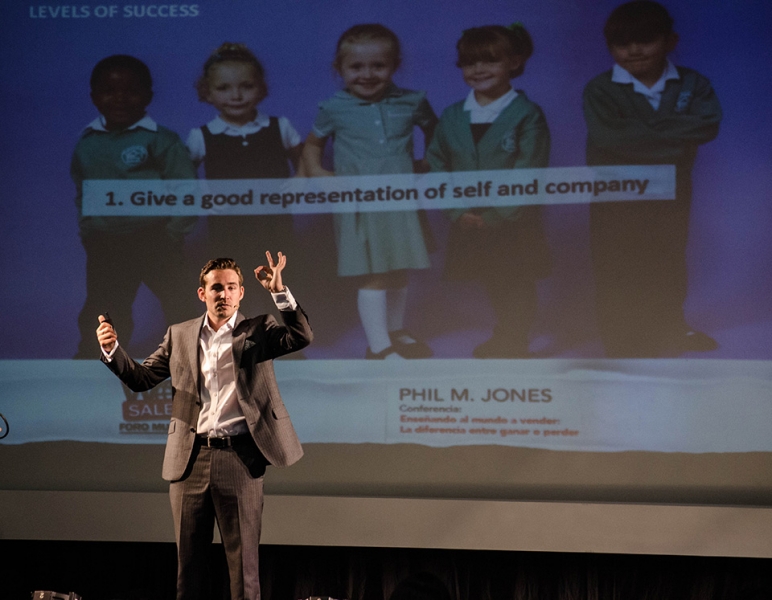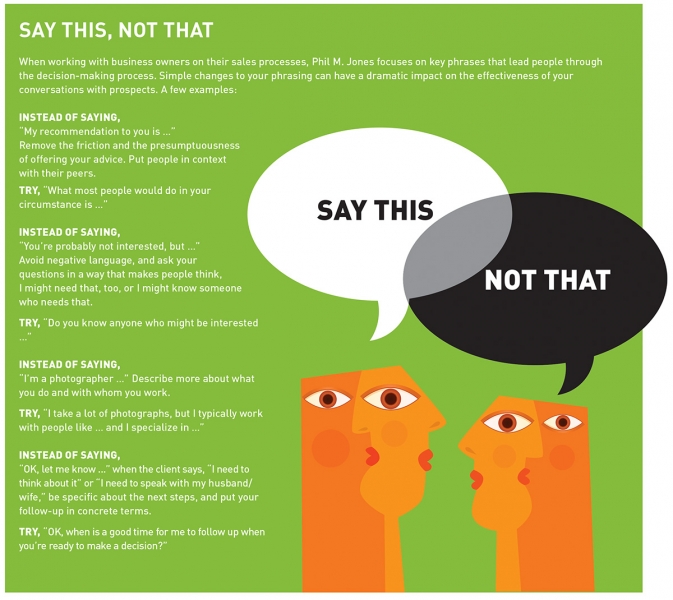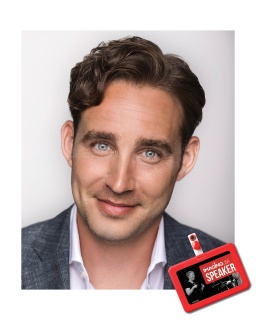Questions lead to sales conversions
Photographers need to reframe their mindset about client communications from transactional to conversational, says Phil M. Jones.
• November 2018 issue
productive client conversations are essential
Has anyone ever gone into the business of photography for the love of sales? Possibly not. It’s the art of image making that draws photographers to the idea of becoming entrepreneurs. And while being a fantastic photographer is a good start, this alone will not make you a successful professional photographer. If you want to turn a healthy profit, then meeting your sales goals is essential.
Phil M. Jones, a globally recognized sales strategy expert who will be speaking at Imaging USA in January 2019, understands the importance of good salesmanship. Following a successful career as a sales professional in several different fields, Jones started speaking about sales in 2008 and has since delivered more than 2,000 presentations in 56 countries to more than 2 million people. Across all these programs, he’s made it his mission to demystify the sales process and reframe how sales success is measured.
For photographers, that often means clearing up the fundamental misconception that they understand what their customers really want.
In truth, very few photographers—or businesspeople in any field—take the time to learn what their clients want or how to deliver it to them in a way that provides lasting value, says Jones.
Slow down
To learn what customers want, photographers need to reframe their mindset about client communications from transactional to conversational. The problem, more often than not, is that people try to close a deal too soon, and they skip important steps in the process.
“Think of it like romance,” says Jones. “You start by inviting your future life partner to coffee, then dinner and drinks, then going away together, then getting married and having babies. You don’t just meet someone and start a family the next day. People’s mistake in sales is they want to get all the way to the finish line in the first conversation. I suggest slowing the process way down.”
Selling, says Jones, is earning the right to make a recommendation. You might find yourself in a situation where you want to tell someone what you think they should do, but you don’t because you think that would be rude. However, people want guidance. You just need to earn the right to give it.
To earn that right, you need to have real conversations. Those real conversations are an opportunity to ask questions, which is how you learn about clients’ needs while also guiding the process.
The person asking the questions is the person controlling the conversation,” says Jones. “Questions leads to conversations. Conversations lead to relationships. Relationships lead to opportunities. So you shouldn’t think, I need more sales. You should think, I need to ask more questions.”
Speaking of questions, it’s also important for photographers to ask themselves the right questions. In Jones’s view, the first two questions you should ask yourself are:
- Who are the people I’m looking to help?
- What are the problems I’m looking to solve?
These questions are important because you’re not looking for clients—well, not initially. You’re looking for people. You want people who will be interested in what you do or people who know other people who will be interested. That’s the way you begin to build your sales funnel and maintain a consistent flow of new leads.

It’s not about price
But how do you find all those people? Good question, but let’s hold on to that thought for a minute and circle back to it later. First, let’s address one of the biggest misconceptions about sales: Price is the most important thing in the decision-making process. It’s not. Most consumers are more concerned with value—what they’re getting for the price. So it’s important to communicate value and differentiators before discussing price with them.
To distinguish yourself based on value, address the price issue proactively without actually talking about price. Formulate questions that address your level of expertise and experience. For example, “What do you know about the levels of photographic expertise?” If someone doesn’t know, then there’s your opportunity to describe the differences and the distinct level of value you provide. You can describe what you’ve done, who you’ve worked with, what you offer that’s unique. Position yourself to explain what you’re bringing to the table in exchange for the amount you charge.
You can also draw parallels to other industries that your prospective client may understand better. For example, “Do you know the difference between a $10 haircut and a $1,000 salon experience?” Then you can explain, “If I was in the world of hairstyling, I’d be positioned here.” Once you’ve had this conversation, you’re in a position to ask, “Is that the kind of experience you’re looking for, or is it just about the job?”
At the end of the day, price is only important in the absence of value. Value comes when you deliver on your promise. That’s a critical concept to understand and one that Jones says should be at the center of a redefinition of what sales success look like.

Filling the funnel
“Success should not be closing the sale,” he says. “It should be delivering on the promise made during the sale.”
Take, for example, a wedding dressmaker. If you’re in the business of selling wedding dresses, when is the most important day? Many wedding dressmakers get excited about the day they make the sale. Instead, they should be focused on the client’s wedding day, which is the day the client realizes the value she paid for. If you deliver on your promise and help her look fabulous on that day, when it really matters, then you’ve earned the right to ask for referrals and to expand your network to more and more people who are a good fit for your business. And that’s how you start expanding your sales funnel with more of the right people.
See how this circles back around?
Ultimately, the sales part of the job is assisting people in the process. There are very few sophisticated buyers of portrait or wedding photography. Most people know they need photographs only in vague terms. As a professional photographer, it’s your job to help them make choices to fit their needs.
“When you can do that, and when you can deliver on your promise of value, then you’ve set yourself on the path to success,” says Jones.
Jeff Kent is the editor-at-large of Professional Photographer.
Tags: business operations sales


